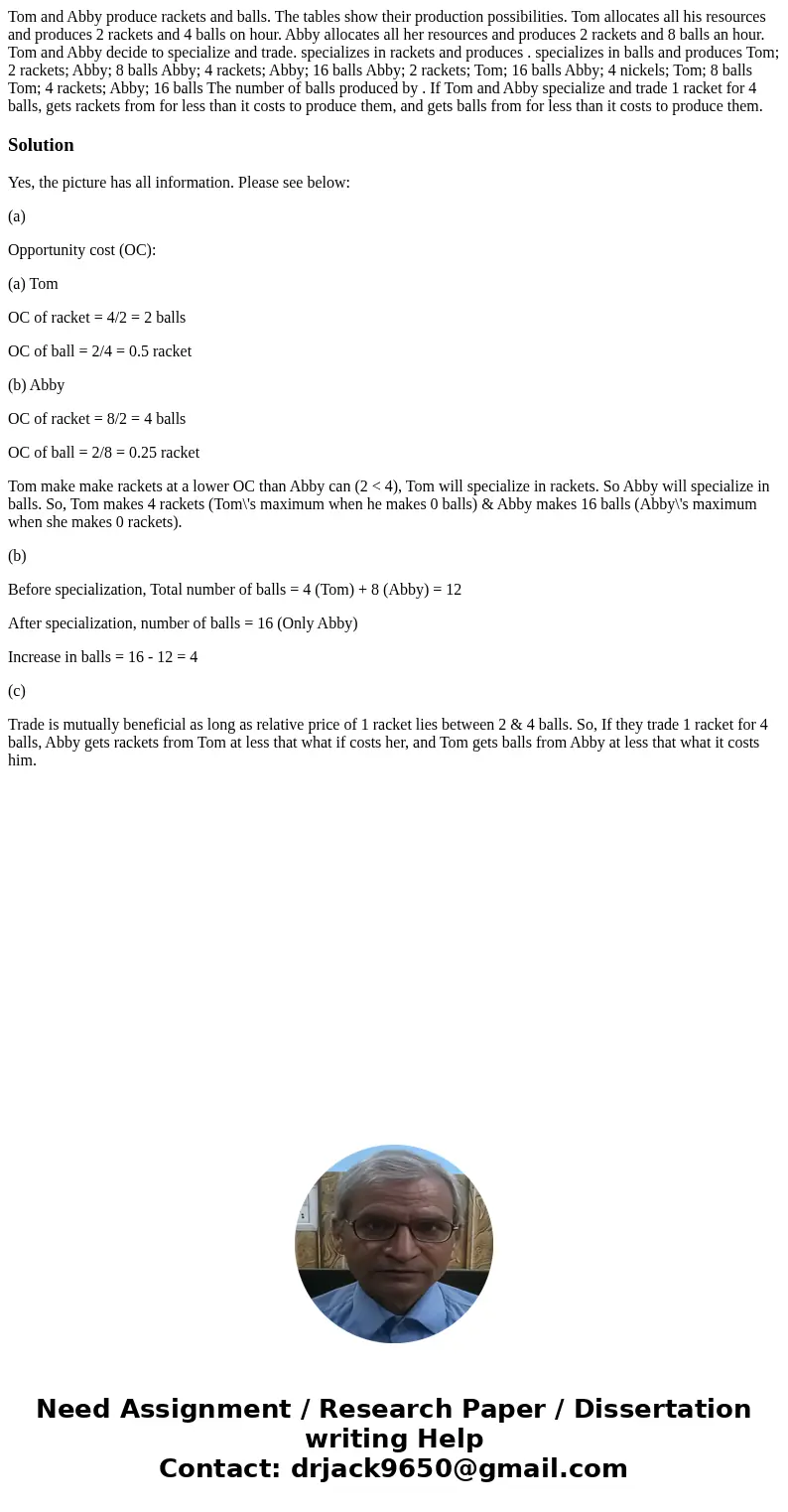Tom and Abby produce rackets and balls The tables show their
Solution
Yes, the picture has all information. Please see below:
(a)
Opportunity cost (OC):
(a) Tom
OC of racket = 4/2 = 2 balls
OC of ball = 2/4 = 0.5 racket
(b) Abby
OC of racket = 8/2 = 4 balls
OC of ball = 2/8 = 0.25 racket
Tom make make rackets at a lower OC than Abby can (2 < 4), Tom will specialize in rackets. So Abby will specialize in balls. So, Tom makes 4 rackets (Tom\'s maximum when he makes 0 balls) & Abby makes 16 balls (Abby\'s maximum when she makes 0 rackets).
(b)
Before specialization, Total number of balls = 4 (Tom) + 8 (Abby) = 12
After specialization, number of balls = 16 (Only Abby)
Increase in balls = 16 - 12 = 4
(c)
Trade is mutually beneficial as long as relative price of 1 racket lies between 2 & 4 balls. So, If they trade 1 racket for 4 balls, Abby gets rackets from Tom at less that what if costs her, and Tom gets balls from Abby at less that what it costs him.

 Homework Sourse
Homework Sourse